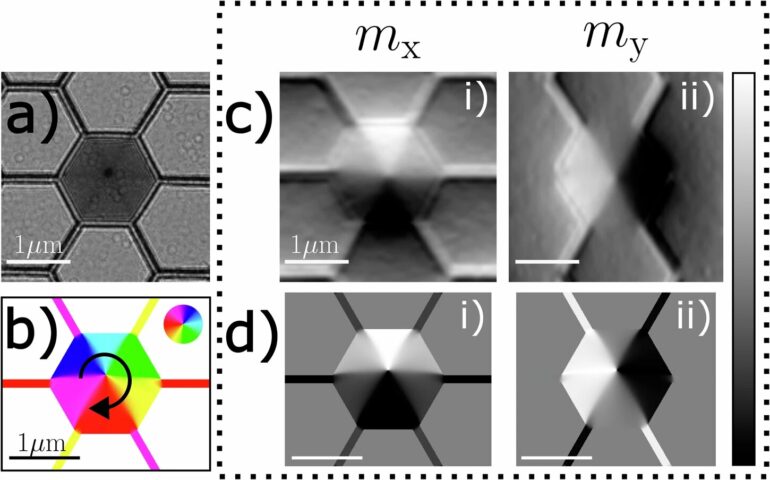Artificial intelligence applications are experiencing a boom and expected to be mainstream technologies in the near future. However, these applications run on classic computing hardware and are extremely power-hungry.
This creates opportunities for development of new energy-efficient hardware solutions inspired by nature, e.g., brain-like computing. Some of the best-known examples are neuromorphic computing and neural networks that mimic the way the human brain works. One of the possible realizations of such neural networks is through an artificial spin ice (ASI) lattice. The U.K.’s National Physical Laboratory and partners have investigated the impact of introducing hexagonal magnetic defects into such an ASI structure.
The research is published in the journal Communications Materials.
Through the interdisciplinary research, the international team successfully demonstrated a mechanism for tailoring the ASI system’s behavior by introducing the designed magnetic defects causing stochastic topological excitations in the system and controlling the dynamics of the ASI-based neural networks. The implication of this discovery is expected to be used in applications including magnetic memory devices and spin-based logic applications.
The results of this study provide insights into the collective and stochastically-controlled behavior in artificial neural networks realized through the magnetic ASI lattice and pave the way for future research into such emerging applications as reconfigurable spin-waveguides and hardware realizations of low-energy future computing systems.
Olga Kazakova, NPL Fellow, said, “This work demonstrates a very important milestone for us: being able to controllably create topological states associated with ASI defects and demonstrate stochastic but statistically predictable behaviors within the ASI lattice. The results bring us closer to realization of energy-efficient neuromorphic computing. This was an outcome of a great international collaboration with large research facilities in the UK, Germany and France.”
More information:
Robert Puttock et al, Stochastic hexagonal injectors in artificial spin ice, Communications Materials (2024). DOI: 10.1038/s43246-024-00614-0
Provided by
National Physical Laboratory
Citation:
Hexagonal magnetic defects could lead to energy-efficient neuromorphic computing (2024, October 3)



